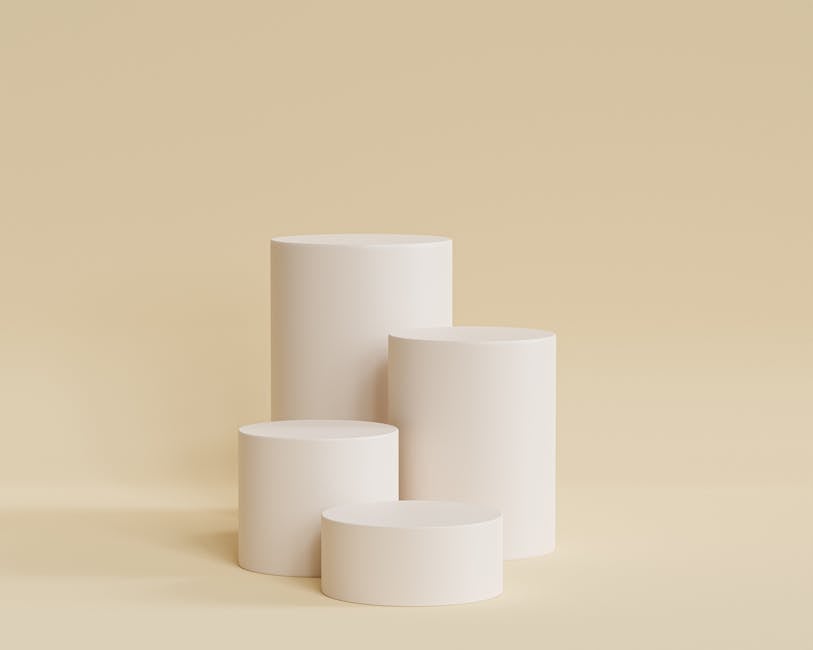Building Your Minimum Viable Product: Key Design Strategies
Ready to transform your idea into a game-changing product? By embracing minimalistic design and prioritising essential features, you can craft a powerful minimum viable product.
This article will guide you through the key design strategies to identify user pain points, streamline the user experience, and iterate through prototyping and testing.
Get ready to innovate and build a product that resonates with your users.
Key Takeaways
- Understand user frustrations and pain points through surveys, interviews, and useability tests.
- Prioritise features that directly address user pain points to enhance useability.
- Continuously refine the user experience based on user feedback.
- Embrace minimalistic design to streamline user interactions and enhance useability.
Identifying User Pain Points

Identify the specific pain points your users experience to prioritise features that address their most pressing needs. Understanding frustrations is crucial for improving useability and creating a product that resonates with your users.
By delving into the challenges and obstacles your users face, you can gain valuable insights that drive innovation and set your product apart.
To truly understand frustrations, engage with your users through surveys, interviews, and useability tests. Listen actively to their feedback and observe their interactions with your product to identify pain points accurately. Look for patterns and common themes in their responses to pinpoint areas in need of improvement.
By gaining a deep understanding of your users’ frustrations, you can prioritise features that directly address these pain points, ultimately enhancing the useability of your product.
Improving useability starts with recognising the barriers that hinder your users’ experiences. Whether it’s a cumbersome onboarding process, confusing navigation, or a lack of essential features, addressing these pain points will lead to a more intuitive and user-friendly product.
Embracing user feedback and proactively addressing frustrations will set the stage for a successful and innovative product.
Prioritising Essential Features

To prioritise essential features for your minimum viable product, assess the core functionalities that directly address user pain points and aline with your product’s primary purpose. Feature selection is crucial for meeting user needs effectively while providing a unique value proposition. Here are some key strategies for prioritising essential features:
-
User Research: Conduct in-depth user research to understand the specific pain points and needs of your target audience.
-
Minimum Viable Features: Identify and prioritise the minimum set of features required to solve the primary user pain points and deliver value.
-
Iterative Development: Adopt an iterative approach to feature development, focussing on essential functionalities first and then expanding based on user feedback.
-
Scalability: Prioritise features that can scale with your product as it grows, ensuring long-term viability and adaptability.
-
Competitive Analysis: Analyse the key features offered by competitors to understand what’s essential for your product to remain competitive.
Streamlining User Experience

To streamline the user experience for your minimum viable product, focus on refining the essential features identified through user research and iterative development, ensuring a seamless and intuitive interaction flow.
User engagement is crucial for the success of your product, so it’s essential to optimise the interface to make it easy and enjoyable for users to accomplish their goals. By prioritising user engagement, you can create an experience that keeps users coming back for more.
One effective strategy for streamlining user experience is to conduct useability testing to identify any pain points or areas for improvement. This will allow you to make informed decisions about interface optimisation, ensuring that every element serves a clear purpose and contributes to a positive user experience.
Additionally, leveraging user feedback to make iterative improvements is key to maintaining high user engagement. By continuously refining the user experience based on real user insights, you can create a product that resonates with your target audience and fosters long-term user loyalty.
Iterative Prototyping and Testing

You should engage in continuous iterative prototyping and testing to refine and enhance your minimum viable product. Rapid iteration is crucial for staying ahead in the competitive market. Here’s how you can effectively achieve this:
- Prototype Quickly: Build rough prototypes rapidly to test and gather user feedback early in the process.
- Iterate Based on Feedback: Implement changes based on user feedback to continually improve the user experience.
- Test Rigorously: Conduct thorough testing to identify and address any useability issues, ensuring a seamless user experience.
- Refine Functionality: Continuously refine the functionality of your product based on user interactions and feedback.
- Prioritise User-Centric Design: Keep the focus on user needs and preferences, making adjustments to meet their expectations.
By embracing rapid iteration and user feedback, you can fine-tune your minimum viable product to better meet the needs of your target audience.
Now, let’s delve into the importance of embracing minimalistic design to further enhance your product.
Embracing Minimalistic Design

Embrace minimalistic design in your minimum viable product to streamline user interactions and enhance overall useability. By focussing on minimalistic aesthetics and efficient functionality, you can create a sleek and intuitive user experience that resonates with modern audiences. Minimalistic design encourages simplicity and clarity, allowing users to engage with your product without unnecessary distractions. This approach not only enhances the visual appeal of your product but also ensures that every element serves a purpose, contributing to a more efficient and enjoyable user experience.
Consider the following key principles when embracing minimalistic design in your minimum viable product:
| Key Principle | Description | Example |
|---|---|---|
| Simplify Navigation | Streamline the user journey by minimising the number of navigation options. | Reduced menu items |
| Focus on Essential Elements | Prioritise key features and content, eliminating unnecessary elements that may clutter the interface. | Distraction-free landing page |
| Use Negative Space | Embrace white space to create breathing room, draw attention to important elements, and reduce cognitive overload. | Spacious product layouts |
Incorporating these principles into your design process will not only result in a visually appealing product but also optimise its functionality, making it more intuitive and user-friendly.
Frequently Asked Questions
How Can I Effectively Gather User Feedback to Inform My MVP Design?
To effectively gather user feedback for your MVP design, engage users early and often. Create a feedback loop that fosters iterative improvements to enhance user experience. This approach ensures that your product meets user needs and expectations.
What Are Some Common Pitfalls to Avoid When Prioritising Essential Features for My Mvp?
When prioritising features for your MVP, avoid scope creep by focussing on essential functionality. Don’t get sidetracked by adding extra bells and whistles. Stick to the core value and build from there.
What Are Some Best Practises for Conducting Iterative Prototyping and Testing in the MVP Development Process?
When building your MVP, prioritise iterative refinement through prototype validation and testing. Engage users for feedback and iterate for continuous improvement. This approach ensures that your MVP meets user needs and drives innovation.
How Can I Ensure That My Minimalistic Design Still Effectively Communicates the Value of My Product to Users?
To ensure your minimalistic design effectively communicates your product’s value, focus on design simplicity that captivates user engagement. Embrace clean visuals, intuitive navigation, and impactful messaging to convey your product’s unique benefits.
What Are Some Ways to Measure the Success of My MVP and Gather Insights for Future Iterations?
To measure the success of your MVP and gather insights for future iterations, focus on user engagement. Use analytics tools to track usage patterns, gather feedback, and iterate improvements based on real user data.
Conclusion
You’ve learnt the essential strategies for building your minimum viable product. By identifying user pain points, prioritising essential features, streamlining user experience, and embracing minimalistic design, you’ve set a solid foundation for success.
Remember, the key to creating a standout MVP isn’t just meeting, but exceeding user expectations.
So, roll up your sleeves and get ready to create a product that will blow your users away.
Contact us to discuss our services now!
